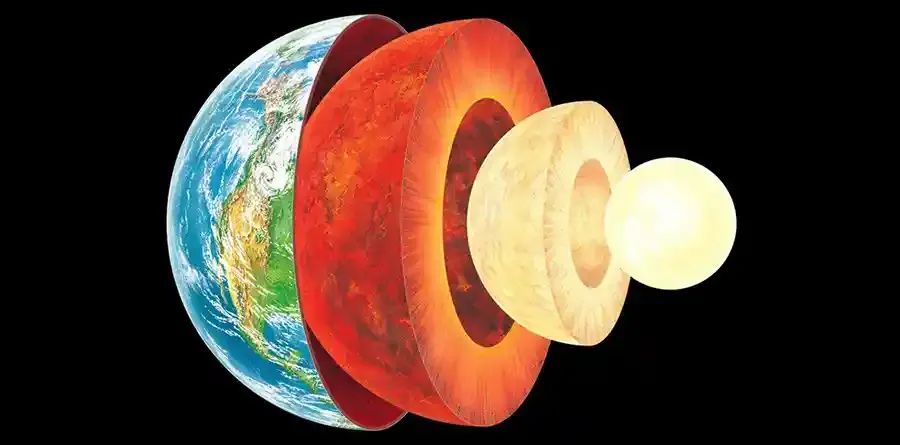Hyundai Motorstudio Senayan Park
Hyundai Motorstudio Senayan Park
Newsroom
The official news from Hyundai Motorstudio Senayan Park and a collection of innovative articles on mobility and sustainability here.
-
4 Structures of Earth Layer Explained!
- Hyundai Motorstudio Senayan Park Senayan Park 2022.06.07
-
There are more mysteries hidden beneath the earth than what appears on the surface. But to understand the mysteries of the earth, you must travel as far as 6,400 km inside the earth.During the journey, you will pass through several different zones, or familiarly called the layers of the earth. Yes, the earth consists of several layers which are distinguished according to its composition.
As such, if you are able to hold the earth in your hands and splitting it in two, you will see different layers that make up the earth. Each layer has a different mineral composition, different functions and characteristics, even its thickness.Earth Layer Structure
To make things easier, the explanation will start from the outermost part, then continue to the deepest part. There are four layers of earth, which are earth's crust, earth's mantle, outer core, and inner core.1. Earth Crust
The earth crust is where we walk every day. Put simply, the earth's crust is the outermost layer of the earth, or the surface. This layer consists of several different compositions such as solid rock, granite, basalt, soil, and others.As the outermost part, the earth's crust is the thinnest layer, only 5-70 km. This is a layer that we can observe and study at firsthand. The earth crust is not something that is fixed because it consists of several tectonic plates that are always moving, even they are passive.
These passive movements sometimes overlap each other, sometimes collide. As part of the earth's crust, tectonic plates 'float' above the earth's mantle in constant motion. The earth crust has a temperature between 500-1,000 C and is divided into two categories, continental and oceanic.Continental crust is a constituent of all the islands which has a thickness of 35-70 km, and is composed of granite and sediment. Oceanic crust is responsible for composing the waters with a thickness of 5-7 km and consist of basalt material.2. Earth's Mantle
The earth's mantle is just below the earth's crust with a thickness of up to 2,900 km, making it the thickest layer of the earth with a volume of 84% of the earth.But any knowledge of the Earth's mantle is learned indirectly. It was because no human could reach this layer. In fact, the deepest hole that humans have ever dug is only 12 km, and it took 20 years to do so.Because of its thickness, the Earth's mantle is divided into several parts based on seismological studies, which are the lithosphere, asthenosphere, and mesosphere.
The lithosphere is a bit difficult to define because it often mixes with the deepest crust. Which is quite understandable, its thickness is around 100 km and consists of 15 tectonic plates. Most earthquakes occur in this layer, some also occur in the lowest layers of the earth's crust.
The asthenosphere is an area of the Earth's mantle that is more fluid and can flow, which also helps the tectonic layers to move around. The mesosphere is the deepest part of the Earth's mantle which has high pressure and temperature with a material composition that is stiffer than the asthenosphere.Fun fact, the common mineral found in the mantle layer is olivine, a mineral that produces gems.3. Outer Core
Some studies said that the Earth's core is a single unit, though the outer core and the inner core are fundamentally different, not even the same layer. But how can we know if we've never seen one? The answer is the same, seismic wave studies.The outer core is located under the Earth's mantle with the main characteristics of molten iron and nickel that are constantly moving along with the rotation of the planet with a low viscosity, about 10 times lower than liquid in general.The outer core has a width of 2,200 km with temperatures reaching 6,100 C, hotter than the inner core. This heat is equivalent to the surface of the sun and is generated by the activity of uranium and thorium. This activity produces electrical energy which in turn produces a magnetic field.The earth's magnetic field helps protect the earth's surface from solar radiation. But for reasons that are not yet understood, the Earth's magnetic field reverses every 200-300 thousand years. The outer core is an important layer because without it, the earth would be a planet like Mars.4. Inner Core
It is the deepest layer, which is composed of iron and nickel. But with extreme pressure and temperature, the Earth's core is denser than the outer core. As the deepest part, the core is more spherical in shape with the size of the moon.This part rotates faster than any other part of the earth and it produces a high force up to 3 million times larger than earth's surface. With this heavy pressure, the Earth's core stores more solidified heavy minerals such as gold, silver, platinum, palladium, and tungsten.
The inner core has a thickness between 1,230 to 1,530 km with an average temperature of 5,500 C. In fact, the inner core 'grows' about 1 mm every year. As it cools, the outer core solidifies and becomes part of the inner core.The cooling process is actually super slow, around 100 C per 1 billion years. Although fairly slow, it has an effect on the earth's magnetic field.




